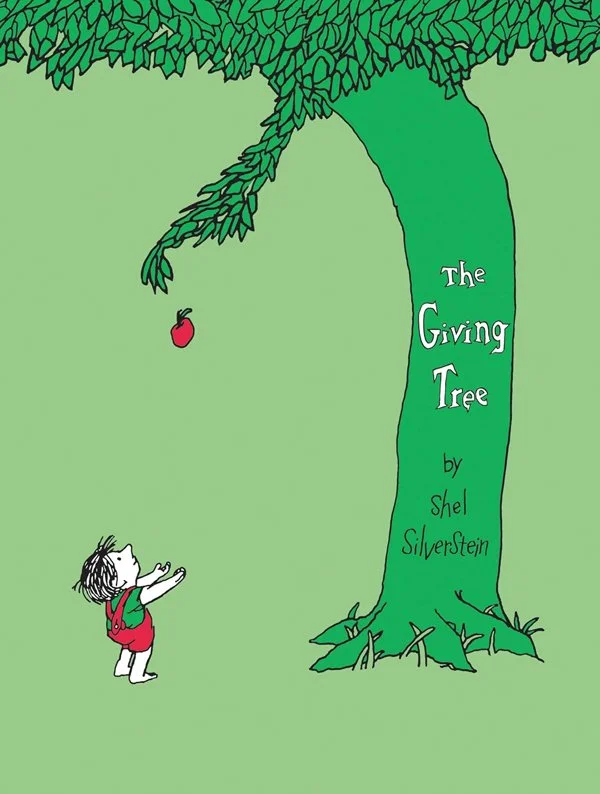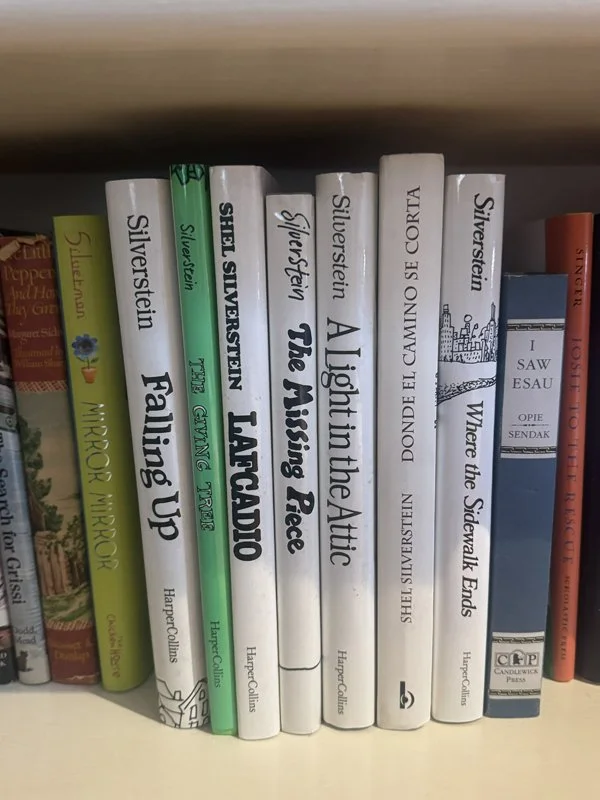NOVEMBER 2025
Giving It Up for
The Giving Tree
by Judy Newman
This time of year, many people I know are talking about giving: Giving Tuesday, the Giving Pledge, holiday gift giving (really, we say in my family, “This year—only gifts for the kids!”).
Given all this talk about giving, I thought it was a good time to re-examine how I feel about Shel Silverstein’s The Giving Tree, arguably one of the most hotly debated children’s books ever published.
First of all, I think that any children’s book that sparks debate for decades is worthy. As a children’s book publisher, marketer, and author myself, I can tell you with confidence that it’s very, very hard to make a lasting impact across generations with your book. The Giving Tree was first published in 1964, and gift givers, book lovers, feminists, tree huggers, book reviewers, and psychologists have been arguing about it ever since. That’s quite an impact!
For 60+ years, readers have argued about whether the Tree is a sap or a saint. And debating whether the boy who becomes a man is a selfish taker or a cherished friend. No doubt: The Giving Tree strikes chords. And because of its ability to galvanize feelings and connect with so many people across generations, I believe it deserves a firm place on all shelves where children’s literature lives. Said simply, everyone should read it.
The small people closest to me are a little too young to really get into a conversation about giving and gratitude and sacrifice and selflessness, but I do find my physical copy of The Giving Tree provides a wealth of entry points to discuss with my reading buddies how a book is made and where it comes from.
I love talking with kids about all the parts of the book—beyond the pages of the story and illustrations. The copyright page (The Giving Tree was published in 1964 situates it in an era in history); the dedication (Shel Silverstein dedicated The Giving Tree “To Nicky” and I encourage my young readers to try to figure out who Nicky is); the author photo (the picture of Shel Silverstein alarms some of my young friends but it does give us an opportunity to explore Shel’s past and the other aspects of his career—and his baldness).
The flap copy on the book (historically written by an editor who really understands how to synopsize the book) says The Giving Tree is “a tender story, touched with sadness, aglow with consolation. Shel Silverstein has created a moving parable for readers of all ages that offers an affecting interpretation of the gift of giving and a serene acceptance of another’s capacity to love in return.” Ursula Nordstrom was Shel Silverstein’s editor at Harper, and I bet, like many excellent editors, she wrote that original flap copy.
When I went to my bookshelf to pick out my copy of The Giving Tree, I remembered that the jacket is green, unlike the other Silverstein children’s books I own, which all have white jackets. Why, I wonder, did Ursula and Shel and the art director decide to make The Giving Tree jacket green? Was it just an ecological theme? Was green supposed to signal envy? Or was it just the color du jour in Harper & Row’s art department?
Many books that have been out for years get repackaged with new covers and new marketing copy. But not The Giving Tree. To my knowledge, it has never been repackaged and is sold and read today in the same edition in which it was first published in 1964. I have one very good friend who worked at Harper & Row when The Giving Tree was first published, and I am going to call her to see if she remembers who worked on the jacket, flap copy, and color choices of this time-honored book that has remained the same for more than six decades.
As far as the story itself, my feelings are pendular. At certain times in my life, I read The Giving Tree as a boy abusing a tree’s generosity, and it made me cringe. Today, I read it as a narcissism-free story of love and generosity.
I used to hate The Giving Tree. I was so upset that the boy who grew up to be a man took advantage of the tree who was giving wholly. I railed against the tree for having no spine and letting this abuse continue. But with age and experience, I have come to appreciate the sadness and reality of the story. Like Silverstein, I don’t think we do right by kids to force-feed them only happy endings. This is a sad book, but it is also about constancy and loyalty and acceptance, qualities I am finding all too rare in our step-over-the-other-guy cancel culture.
But most of all, whether you agree that The Giving Tree is about generosity or abuse—or both—it has achieved what we all want in a book: to spark interest and imagination and stay in print.
Season’s Readings!
Judy •
Judy Newman, Chief Impact Officer, Scholastic



